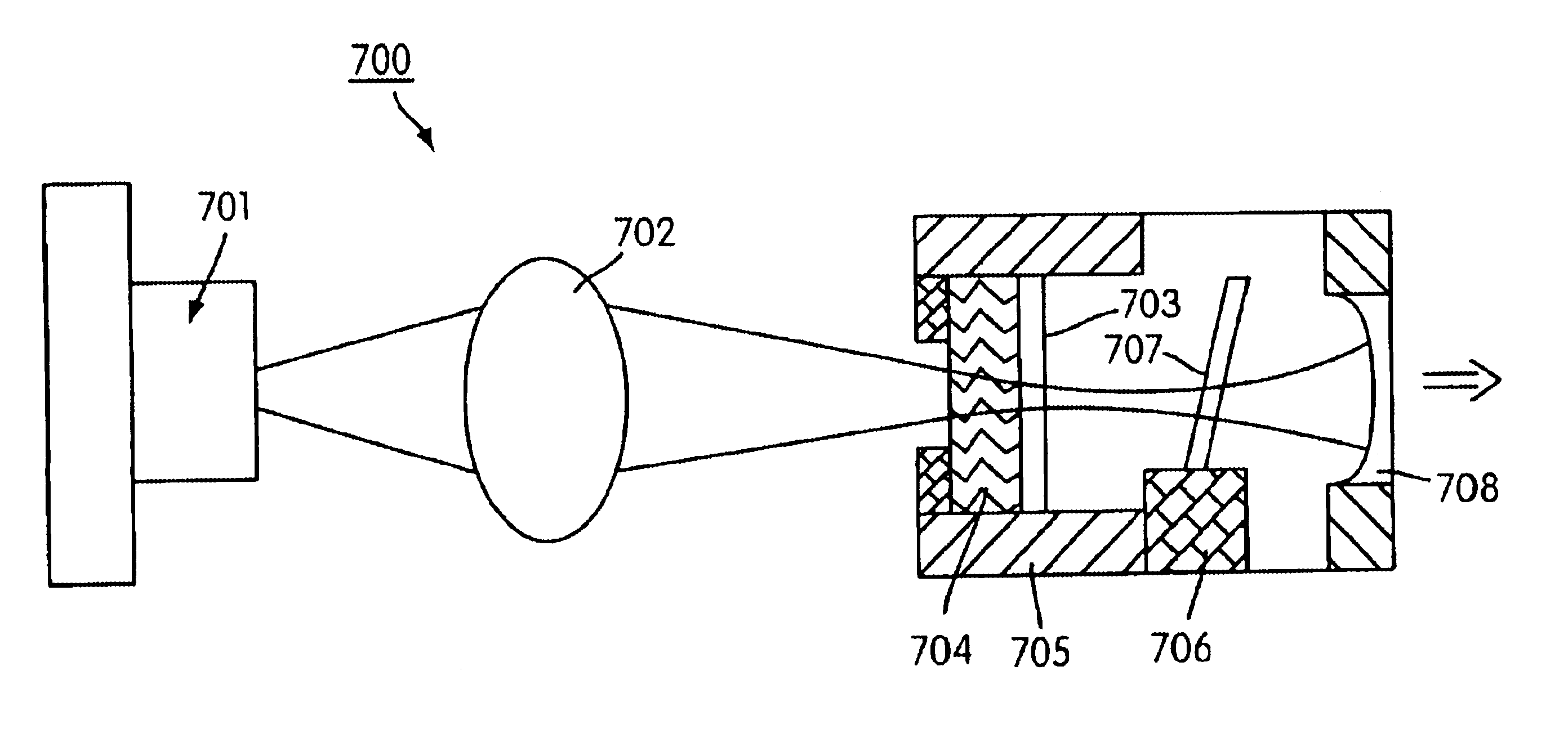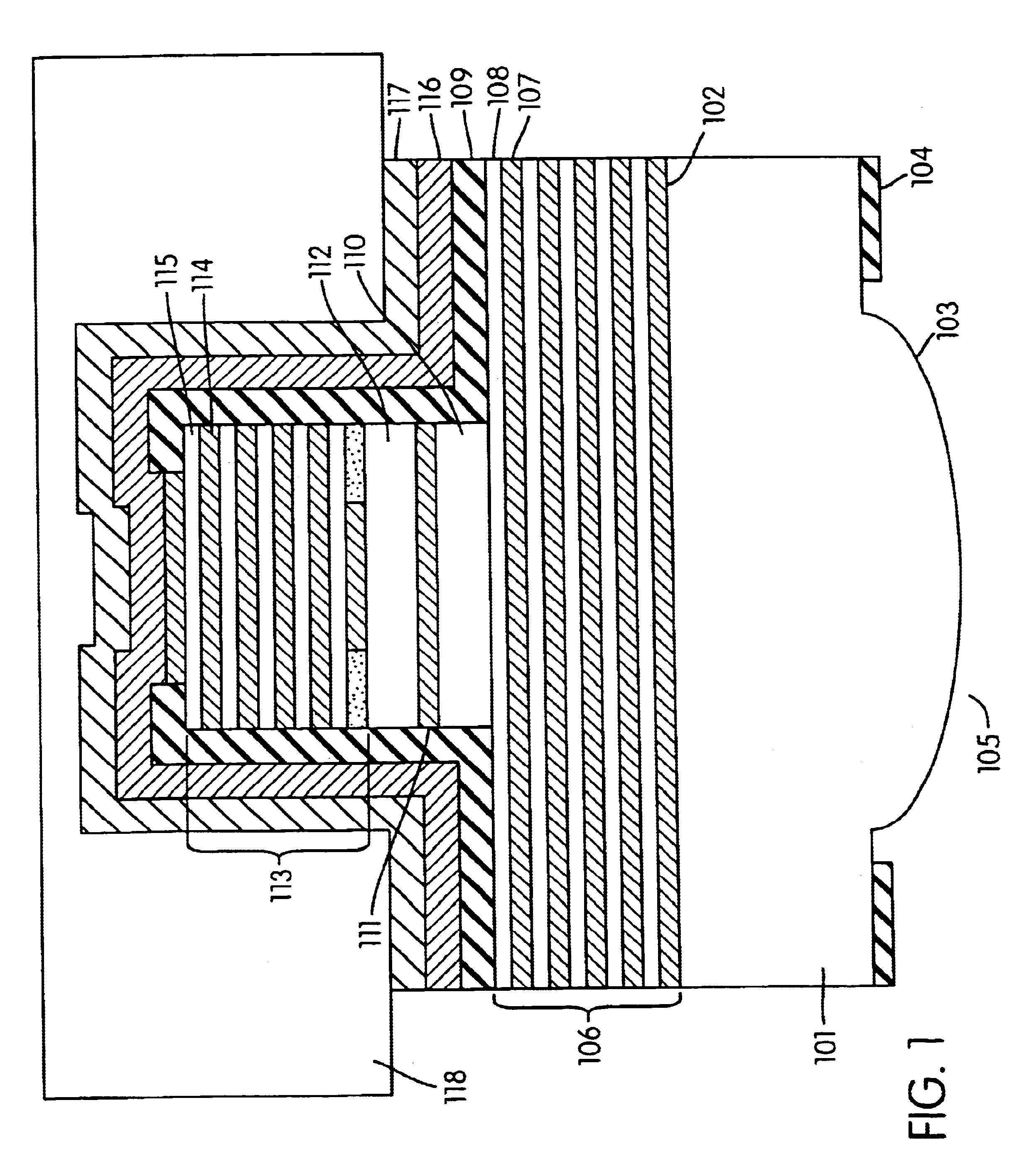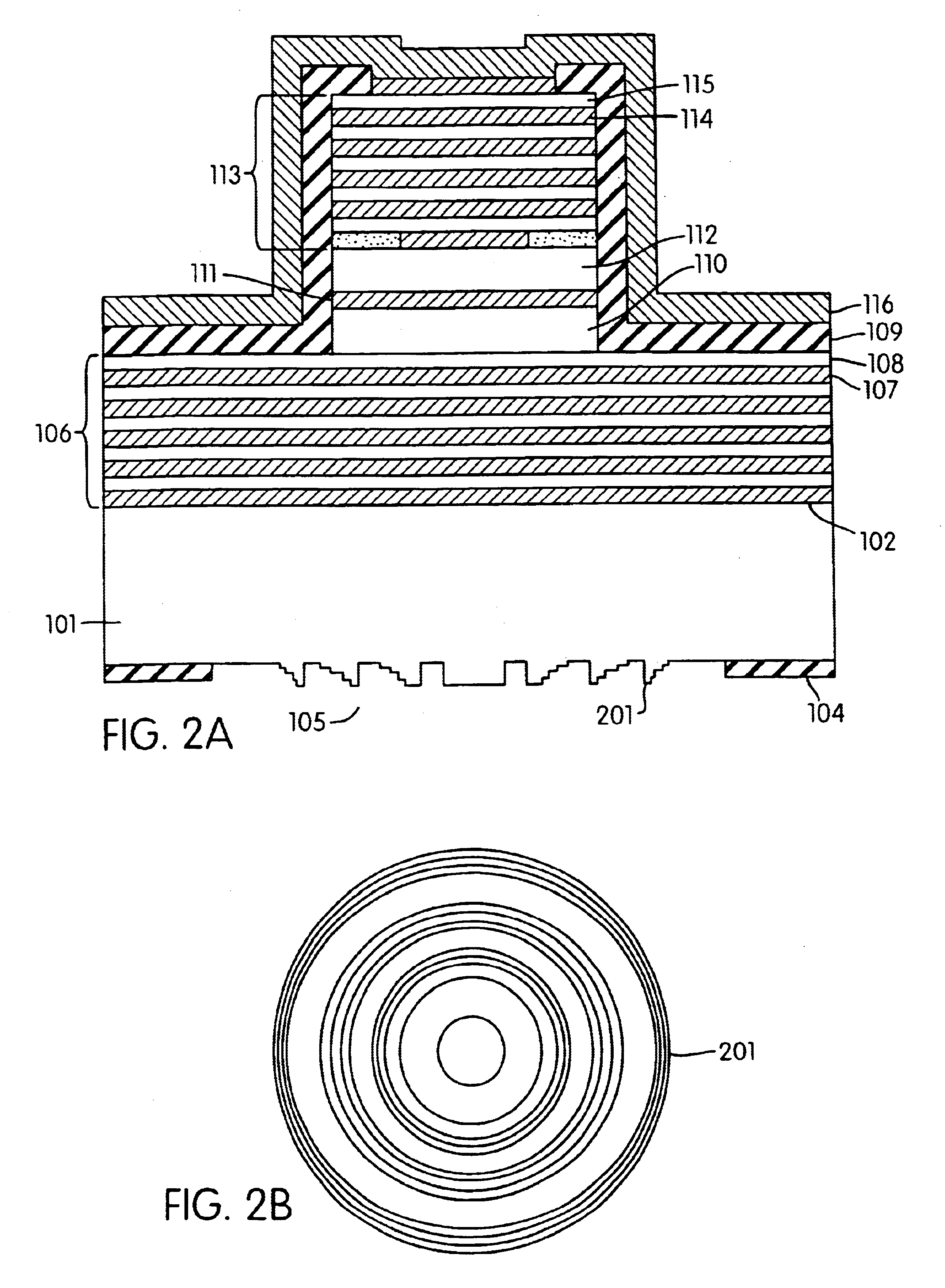VCSEL and VCSEL array having integrated microlenses for use in a semiconductor laser pumped solid state laser system
a solid-state laser and semiconductor laser technology, applied in the direction of lasers, semiconductor laser structural details, semiconductor lasers, etc., can solve the problems of laser systems that require the use of expensive or inefficient pumping mechanisms, lasers are typically too low in power and beam quality to be effective in a wide range of applications, and achieve improved heat dissipation, high power output, and improved overall power output
- Summary
- Abstract
- Description
- Claims
- Application Information
AI Technical Summary
Benefits of technology
Problems solved by technology
Method used
Image
Examples
Embodiment Construction
[0018]FIG. 1 demonstrates an exemplary embodiment of VCSEL 100 according to the present invention. VCSEL 100 comprises a substrate 101 of a suitable semiconductor material, on which the other materials of the VCSEL 100 can be grown, such as GaAs, Si, InP or the like. The substrate 101 has opposed inner and outer surfaces 102 and 103, and is preferably of N-type conductivity. N-ohmic contact layer 104 is deposited onto surface 103 and defines a region 105 through which light is emitted, as described below. Region 105 is coated with an antireflecting dielectric layer (not shown). On the inner surface 102 of the substrate 101 is a first mirror stack 106. The mirror stack 106 is a distributed Bragg reflector, and is formed of alternate layers 107 and 108 of semiconductor materials having different indices of refraction. This is achieved, for example, by using materials of different compositions, such as AlGaAs, in which the amount of aluminum in the material of the layers 107 is differe...
PUM
 Login to View More
Login to View More Abstract
Description
Claims
Application Information
 Login to View More
Login to View More - R&D
- Intellectual Property
- Life Sciences
- Materials
- Tech Scout
- Unparalleled Data Quality
- Higher Quality Content
- 60% Fewer Hallucinations
Browse by: Latest US Patents, China's latest patents, Technical Efficacy Thesaurus, Application Domain, Technology Topic, Popular Technical Reports.
© 2025 PatSnap. All rights reserved.Legal|Privacy policy|Modern Slavery Act Transparency Statement|Sitemap|About US| Contact US: help@patsnap.com



